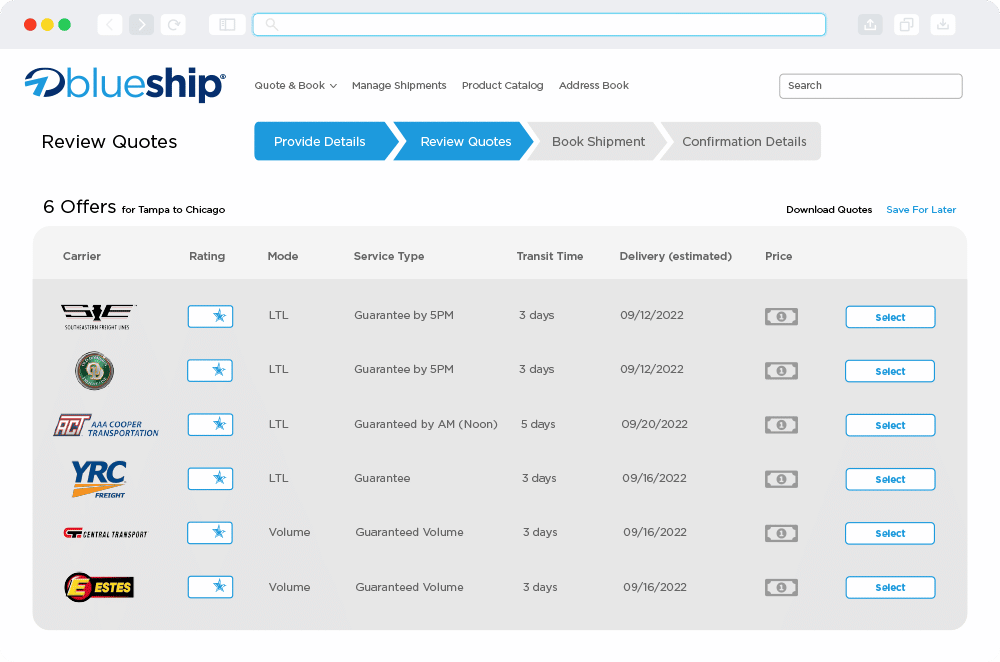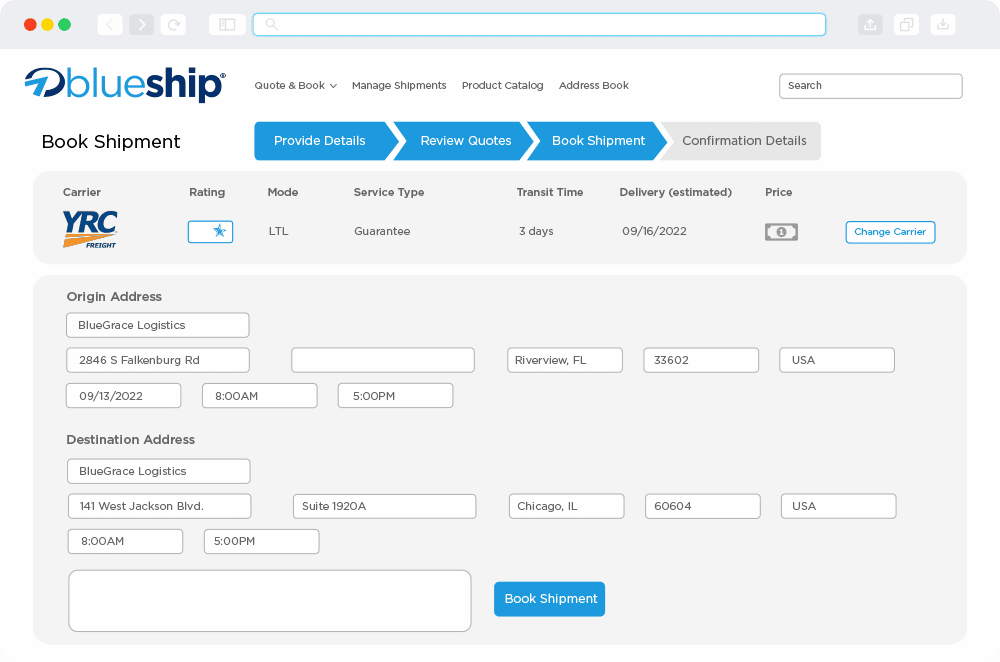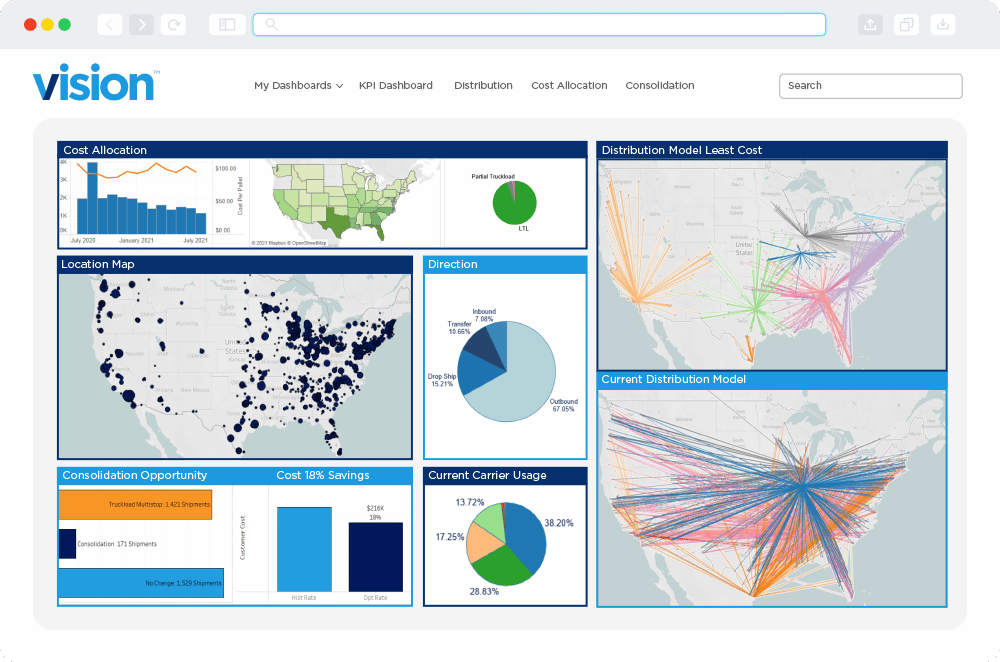
What Is Supply Chain Forecasting and Where Do I Start?

A Guide to Optimizing Your Operations
In today’s fast-paced environment, efficient supply chain management is important for businesses to stay competitive and meet customer demands. Supply chain forecasting is vital in optimizing shipping operations by providing valuable insights into demand patterns, market trends, and inventory management.
In this comprehensive guide, we will explore the concept of supply chain forecasting. Then, we’ll dive into its significance in driving informed decision-making and how to leverage it to achieve cost savings and operational efficiency.
If you want to learn how to leverage supply chain forecasting to boost operational efficiency, here’s what we’ll discuss:
Get Your Free Supply Chain Analysis!
What Is Supply Chain Forecasting?
Supply chain forecasting refers to the process of predicting future demand for products or services within a supply chain network. Generally, it entails using historical data, market trends, and relevant information to make informed predictions about future demand patterns. Forecasting in supply chain management aims to achieve the following:
- Demand Planning: By analyzing past data, patterns, and trends, businesses can estimate the quantities of products that customers are likely to purchase in the future.
- Inventory Optimization: Supply chain forecasting enables businesses to optimize inventory levels, ensuring that they have the right products available at the right time. This helps reduce costs, improve cash flow, and enhance customer satisfaction.
- Production Planning: Forecasting enable businesses to improve production processes, reduce lead times, and ensure they can efficiently meet customer demands.
- Procurement and Supplier Management: This helps prevent supply disruptions, manage lead times, and maintain strong supplier relationships.
- Transportation and Logistics Planning: By understanding future demand patterns, businesses can plan their transportation resources efficiently, streamline routes, consolidate shipments, and reduce empty miles.
- Cost Reduction: By forecasting demand and aligning it with supply, businesses can optimize inventory levels, improve production planning, and streamline transportation activities.
- Customer Satisfaction and Service Level: Supply chain forecasting effectively helps businesses meet customer demands. Meeting customer expectations through accurate forecasting builds trust, loyalty, and a positive brand reputation.
Essential Components of Supply Chain Forecasting
Supply chain forecasting relies on a set of essential elements to make accurate predictions and optimize overall operational efficiency. These elements form the backbone of the forecasting process, enabling businesses to anticipate future demand patterns and make informed decisions. As a result, demand forecasting in supply chain analytics relies on the following key components:
- Historical Data Analysis: Historical data analysis is a fundamental component of forecasting. It involves examining past sales, customer behavior, and other relevant data to identify patterns and trends.
- Demand Patterns: Understanding demand patterns is crucial for effective forecasting. Demand patterns can be seasonal, cyclical, or trend-based. Seasonal patterns occur when demand varies based on specific seasons or recurring events, such as holidays.
- Market Trends: Market trends refer to broader changes or developments that impact demand. These trends can include shifts in consumer preferences, technological advancements, economic conditions, or industry-specific factors.
- Forecasting Techniques: Various forecasting techniques and models are available to businesses to generate accurate predictions. These techniques can include time series analysis, regression analysis, moving averages, or exponential smoothing.
Using Data Analytics and Technology for Forecasting
Data analytics and advanced technologies, such as artificial intelligence (AI) and machine learning (ML) enhance the accuracy of supply chain forecasting. By leveraging predictive analytics, which uses historical data and algorithms to identify patterns, trends, and correlations, businesses can make more precise and reliable forecasts.
Big data, which encompasses large volumes of data from multiple sources, provides valuable insights into market trends, customer behavior, and external factors that impact demand. By harnessing the power of data analytics and technology, businesses can gain a competitive edge in their forecasting processes.
For example, AI and ML algorithms can analyze large amounts of data, identify hidden patterns, and generate forecasts with high accuracy. This improves operational efficiency and helps identify potential risks and opportunities, allowing businesses to respond to market changes before they happen.
By leveraging these insights, companies can optimize their inventory levels, reduce storage costs, and improve their fulfillment process. Moreover, companies that utilize these predictive technologies can use them to improve routes, reduce fuel consumption, and minimize delivery times, resulting in substantial cost savings and improved customer satisfaction.
The Impact of Effective Supply Chain Forecasting
Effective forecasting has a profound impact on shipping operations. As a result, businesses can achieve several positive outcomes by accurately predicting demand and aligning it with supply, including:
- Improved Inventory Management: Forecasting in supply chain management enables businesses to optimize their inventory levels. This helps prevent stockouts, where products are unavailable when customers require them, and reduces the risk of overstocking, which ties up capital and increases carrying costs.
- Reduced Lead Times: This allows businesses to anticipate demand and align their supply chain activities accordingly. Companies can proactively plan and allocate resources by understanding future demand patterns, ensuring faster order fulfillment and reduced lead times.
- Cost Savings: Effective forecasting leads to cost savings in various aspects of shipping operations. By accurately predicting demand, businesses can optimize inventory levels, preventing excess inventory and reducing holding costs.
- Streamlined Production Planning: Supply chain forecasting enables business to align production schedules with anticipated demand, minimizing excess production expenses and reducing waste.
- Enhanced Customer Experiences: Forecasting is important in meeting customer expectations and delivering enhanced experiences. By accurately predicting demand, businesses can ensure product availability and timely delivery, improving customer satisfaction.
Best Practices for Implementing Supply Chain Forecasting into Your Business
Implementing supply chain forecasting requires a structured approach and adherence to best practices. Here are some key recommendations to optimize your forecasting process:
- Collect and Analyze Relevant Data Points: Gather historical sales data, market trends, customer behavior, and any other relevant data to form the foundation of your forecasts. Make sure this data is reliable and from various sources to integrate into one centralized system.
- Cross-Functional Collaboration: Engage with suppliers and key stakeholders across different departments to gather their insights and inputs. Collaborative forecasting can improve accuracy and alignment across the supply chain.
- Continuously Monitor and Adjust: Regularly review and update your forecasts based on changing market conditions, demand patterns, and internal factors. Incorporate feedback from sales teams and adjust forecasts accordingly.
- Apply Analytics and Technology: Leveraging advanced analytics tools and technologies, like AI and ML, to process large volumes of data and identify complex patterns.
- Incorporate Market Insights and Industry Trends: Stay informed about market trends, technological advancements, and disruptions that can impact your supply chain. Incorporate these insights into your forecasting process to enhance accuracy and responsiveness.
- Scenario Planning: Assess the impact of different scenarios on your supply chain to enable better contingency planning and risk management.
Leveraging the BlueGrace Logistics Confidence Index
To empower supply chain professionals with comprehensive insights, the BlueGrace Logistics Confidence Index stands as a valuable resource. This index combines industry data, market trends, and expert insights to provide a holistic view of supply chain confidence.
The BlueGrace Logistics Confidence Index is centered around supply chain forecasting and its pivotal role in enhancing shipping efficiencies. Leveraging key indicators such as inventory levels, order volumes, and revenue forecasting, it provides accurate predictions regarding industry expansion or contraction. In addition, this index serves as a valuable tool for freight shippers, assisting them in identifying potential risks, opportunities, and areas for improvement in both supply chain forecasting and logistics.
By combining these factors, the index provides an accurate and practical analysis of the supply chain industry to guide stakeholders in their decision-making process.
In Conclusion
Supply chain forecasting is a game-changer for enterprise businesses seeking to optimize their shipping operations. By leveraging historical data, market trends, and advanced analytical techniques, businesses can unlock efficiency, reduce costs, and enhance customer satisfaction.
Additionally, the BlueGrace Logistics Confidence Index further enhances this process by providing valuable insights into the current state of the supply chain industry. By implementing best practices, embracing data analytics and technology, and leveraging the insights offered by the index, businesses can gain a competitive edge, make informed decisions, and unlock efficiency in their supply chain operations. Embrace the power of accurate supply chain forecasting and set your enterprise business on a path of success!
Looking to chat further regarding your supply chain forecasting strategy and implementation? Speak with a BlueGrace expert and get a free supply chain analysis today!
Related Posts
Predictive and Prescriptive Analytics in Logistics
Predictive and Prescriptive Analytics in Logistics
View Whitepaper
How to Use Predictive and Prescriptive Analytics to Benefit Your Supply Chain
How to Use Predictive and Prescriptive Analytics to Benefit Your Supply Chain
View The Logistics Blog®
Predictive and Prescriptive Analytics - FreightWaves NOW Interview
Predictive and Prescriptive Analytics - FreightWaves NOW Interview
Read News






